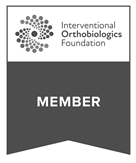Body balance as we know it demands our sensory systems be intact and functioning properly. The eyes (visual system), the inner ear (vestibular), skin, muscle, tendon, joint sensations (somatosensory system) all take part in body stabilization and balance.
To get the perfect balance human body needs to involve complete sensorimotor data that lays within central nervous system (brain and spinal cord) and implement the according responses of muscles and skeleton.
Computer Assisted Rehabilitation Environment (C.A.R.E.N) is a platform that enables a variety of post-trauma patients to rebuild muscle strength and allows for balance and stability restoration.
This project utilizes virtual reality applications with actual time results evaluation.
Meticulous assessment and quantitative measurements maintain a safe and efficient environment for full-on resultful training session. Static stability and posture balance play a great role in a variety of physical therapy programs. These programs are aimed to help fix balance and stability that has been lost to neurological disorders, such as strokes.
C.A.R.E.N is a top training solution for patients who struggle to maintain their own stability. Read more Motion Equilibrium Reprocessing Therapy (MERT) with C.A.R.E.N Motion Equilibrium Reprocessing Therapy (MERT) can be used in all patients who need to be treated for maintenance of balance like appears in non- progressive vestibular , motor and neurological conditions. MERT is the most advanced habituation therapy for patients with non- progressive vestibular disease.
C.A.R.E.N (Computer Assisted Rehabilitation Environment) diagnostic abilities are appropriate for any person who has problems from a neurological or neuromuscular condition remaining after initial diagnosis and treatment. The commonest conditions that are diagnosed and treated with the technology include head injury, stroke, multiple sclerosis, motor neuron disease, cerebral palsy and muscular dystrophy, and a wide range of rare disorders and some with undiagnosed disorders. Read more The severity of a concussion, increasingly referred to as a mild traumatic brain injury (MTBI), can vary from one incident to the next, and symptoms can tell us a great deal about what issues need to be addressed during rehab. Particularly in the case of multiple sustained concussions, repeated blows can result in serious damage


































































